When our forefathers were conquering the great wilderness of the new world, they ate some foods that would be pretty weird by our modern standards. Sure, we’ve all heard the tales of how Thomas Jefferson introduced the US to macaroni and cheese, French fries, and ice cream.
Yet historically our forefathers, the pioneers and homesteaders often survived on a subsistence diet of what was available. This included things like squirrel and eel, not to mention headcheese, calf’s head soup, and the under-appreciated taste of cow tongue.
This also means that you can turn to the seemingly strange foods our forefathers enjoyed, should you ever find yourself needing to live on a subsistence diet.
Attention though!
To be fully safe, knowing what foods we can rely on is not enough. It is important to act now and be prepared for everything that might happen in the future. This is why I believe the information shared below about the weird foods our forefathers ate goes well with the information offered by the Self-Sufficient Backyard book.
This includes very important things like:
- How to easily make your own root cellar
- How to get your own independent source of water
- How to make a “Year-Round Self-Sustaining Greenhouse”
- How to preserve EVERYTHING your tiny homestead produces
- DIY Projects from the 1900s (extra book offered free of charge)
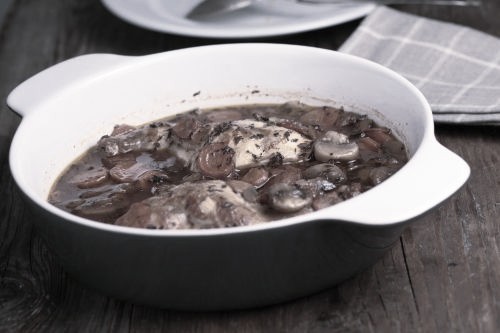 Squirrel & Rabbit
Squirrel & Rabbit
Today eating squirrel might some weird, but if was a very common meat enjoyed by our forefathers. Today hunters and people living in rural areas enjoy squirrel and rabbit meat both as a traditional meal that will help you get by when money is tight.
While our forefathers roasted squirrels and rabbits, they were most often stewed or slow-cooked. Not only did this ensure that any potential pathogens were killed, but it also maximized the nutrient value of the squirrel carcass.
Stewing and similar slow-cooking methods help break down fat and render collagen into more easily digestible gelatin. It also helps release the denatured proteins in the squirrel’s bone marrow. These are also similar methods you could use for small non-traditional game animals like racoon and possums.
Squirrel & Rabbit Dishes to Try
- Squirrel or Rabbit Stew
- Squirrel Pot Pie (recipe below)
- Pallela
Today, you can do anything with squirrels that you would do with a bone-in piece of chicken like chicken wings. I’ve even eaten grilled squirrel buffalo wings!
Pro Tip
Some fishing lure companies like Mepps will pay you for salt-preserved squirrel tails. So, while it’s illegal to sell squirrel meat, the ones you harvest for yourself can even make you a little bit of money on the side!
Squirrel Pot Pie Recipe
Right off let me state, that I fully understand that there are people out there with traditional squirrel pot pie recipes handed down through the generations. For those who haven’t made squirrel pot pie before, I think this recipe is an easy starting point that you can customize how you see fit. You could also use this recipe for rabbit pot pie, using one rabbit instead of two squirrels.
Ingredients:
 2 squirrels, cleaned and skinned
2 squirrels, cleaned and skinned- 3 large carrots, chopped
- 2 large red potatoes, chopped
- 1 cup peas, frozen
- 1 medium yellow onion, chopped
- 2 cloves garlic, minced
- 2 cups chicken stock
- 1/2 cup milk or cream
- 4 tbsp cup butter
- 1/4 cup flour
- Salt and pepper
- 1 tsp thyme
- 1 tsp rosemary
- 2 pie crusts, homemade or storebought
Method:
- Step One: Put both cleaned squirrels in a crock pot with an inch of water, salt and pepper. Let them braise on low heat until the meat is tender enough to pick off the bones. This usually takes 90 minutes to 2 hours.
- Step Two: Thoroughly pick the squirrel meat off the bones. Discard the bones and add the juices from the crockpot to the chicken stock.
- Step Three: Melt the butter in a large saucepan over medium heat. Add the onion and garlic and sweat for 5 to 7 minutes until the onion starts to turn translucent. If the garlic starts to brown, remove it earlier.
- Step Four: Pull all the onion and garlic pieces out and whisk in the flour with a fork to make a roux. Keep stirring it until the paste of the roux is light brown, to cook the flour flavor out of it.
- Step Five: Add the broth and milk in small doses, stirring constantly. The liquids will gradually simmer and absorb into the roux until the mixture thickens into a creamy sauce.
- Step Six: Stir in the carrots, potatoes, and shredded squirrel meat. Season with salt, pepper, rosemary and thyme to taste.
- Step Seven: Simmer for 10 minutes to let the root vegetables soften a little bit and meld the flavor. During this time, you should be preheating your oven to 375 degrees.
- Step Eight: Line a standard pie dish with one pie crust, and light prick with a fork.
- Step Nine: Stir-in the frozen peas and pour the filling into the pie dish crust. Then level it evenly with a spatula.
- Step Ten: Cover with the pie crust, crimping the edges. Then slice a few slits in the top for ventilation.
- Step Eleven: Bake for 25 to 30 minutes or until the crust is golden brown and the filling is bubbling through the slits.
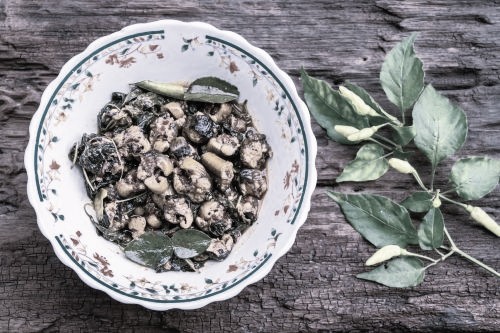 Eel
Eel
Our forefathers and coastal settlers ate a lot of eels, as they were commonly caught in fishing nets. In some places, this meant hideous, yet delicious lamprey eels, which required a little dressing up to make them look as good as they tasted.
It’s worth noting that eels weren’t just table fare for the poor and local fishermen. Wealthy forefathers enjoyed eels stewed or even integrated into a sort of en gelee. So, while this might seem like a weird food by today’s standards, eel was sometimes considered fine dining for our forefathers.
Eel Dishes to Try
- Eel En Gelee
- Eel Stir Fry
- Eel Livornese
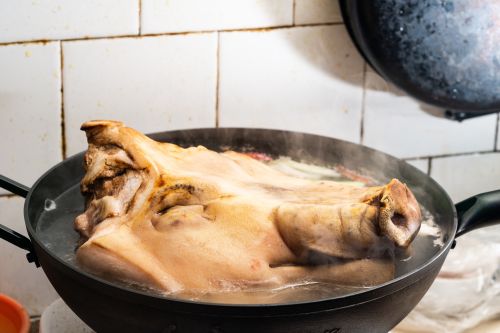 Calf & Hog Head
Calf & Hog Head
Calf and hog head was a very common ingredient eaten by our forefathers. The head has a lot of good meat in it, and a lot of connective tissues that render into succulent gelatin when slow-cooked.
Every time a forefather’s household butchered a calf, steer or hog, the head was specially reserved. They understood its culinary value and certainly didn’t want it to go to waste. This was certainly true for centuries, and it’s only been in the last 40 years or so that we’ve looked away from calf and hog heads.
As a boy, grandma made me carry hog heads home from the butcher to “Build my big-boy muscles” so she could make head cheese. A calf head can be roasted to make a beef-style capuzelle. The jowls from a hog’s head can be salt cured to make guanciale.
Calf Head Dishes to Try
- Capuzelle
- Calf Head Soup
- Calf Brain Sandwich
Hog Head Dishes to Try
- Guanciale
- Head Cheese
- Hog Head Soup
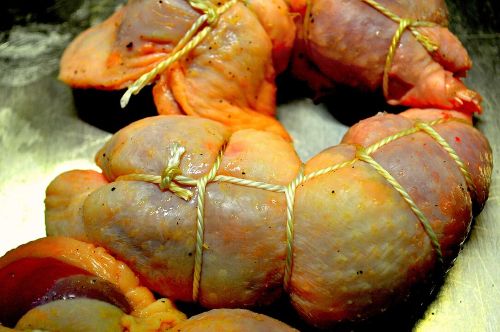
Pigeon or Squab
While today we think of pigeons as being “Rats of the Sky” our forefathers found them to be a delicious meal fit for just about any occasion. Many people raised pigeons as a food source. Especially those who had French roots and enjoyed meals like roast squab.
Our forefathers often spit roasted pigeons over an open fire or stewed them to make the most out of each bird. Pigeon pie, which is very much like a chicken pot pie was also a very common dish our forefathers ate, which might seem weird by today’s standards.
These days I wouldn’t recommend catching your own wild pigeons. Especially in an urban environment. As the risk of parasites and pathogens is too high.
Some people raise pigeons to be eaten as “Squab.” You could even raise your own, as my uncle once did. Qual, which you can sometimes find for a good price in specialty markets is a very close approximation.
Pigeon – Squab Dishes to Try
- Pigeon Pie
- Roast Squab
- Squab Stew
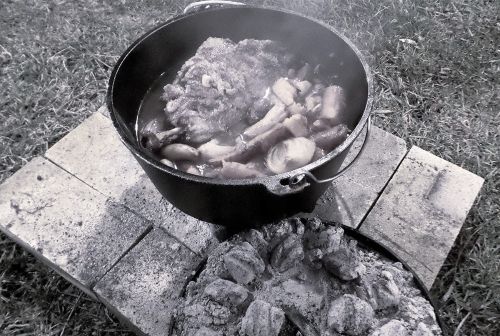
Beaver Meat & Tail
For centuries our forefathers, the pioneers, mountain men, and fur trappers of every kind ate beaver tail and beaver meat. It was an integral part of the fur trade and a way people survived in the wild frontier. So much so, that it altered the landscape and littoral topography of the North American Continent!
In the wild, beaver tail was typically roasted over a fire. This helped blister and break up the very tough outer skin to allow pioneers and fur trappers access to the thick fat stores within. In the wintertime, beaver tail was often simmered for a long time and made into stew. This helped render the fat into the broth, which was more easily digestible.
Beaver Dishes to Try
Today beaver trapping and hunting is highly regulated in various US states and provinces. Quebec is one of the places where it’s most available to the average person.
If you do legally catch a beaver for consumption, you can treat the body meat like a bone-in cut of beef such as a beef shank.
Beaver tail has a fat-to-lean ratio somewhat similar to a fatty pork shoulder. I think it’s best scored, salted, and then slow-smoked.
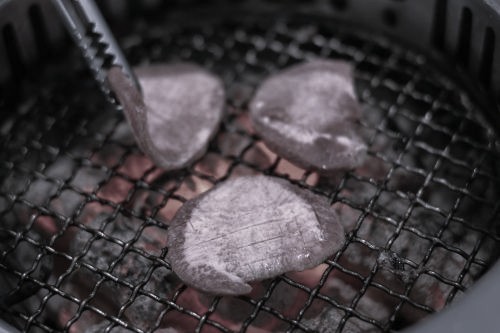 Beef Tongue
Beef Tongue
While cow tongue might sound weird to the average person today, it was a food our forefathers ate a lot of. There was always one available every time a calf, steer, or cow. With its dense muscle fibers, it generally took longer to stew tender, and had a different consistency than the rest of the head meat. So, it was often used separately.
Our forefathers and pioneer ranchers often made a stew using just beef tongue and foraged root vegetables. It could be kept in a communal pot simmering over the fire all day long without worrying about the tough tongue meat breaking down too much.
In the west and parts of old Mexico, beef tongue was often slow roasted over an open fire. Then sliced thin, often served with a scratch-made tortilla to make improvised tacos.
Beef Tongue Dishes to Try
- Tacos de Lengua (Beef Tongue Tacos) – Recipe below
- Cow Tongue Stew
- Roast Beef Tongue
- Slice Beef Tongue Jerky
Pro Tip
Today full-service country butchers and Latin meat markets still sell beef tongue. I like to check out butcher shops when I’m traveling and will often ask if they have a beef tongue as a way to determine if they’re truly handling meat in-house or getting it prepackaged.
Beef Tongue Tacos Recipe
Making beef tongue tacos might take you 4 to 5 hours. It’s the sort of thing you start in the late morning after clearing up breakfast, to have ready for supper.
Ingredients:
- A whole beef tongue
- Yellow onion, halved
- Yellow onion, diced
- 4 to 6 garlic cloves
- Whole bay leaf
- Salt and pepper
- 2 tbsp olive oil
- Corn tortillas
- Fresh cilantro, chopped
Method:
- Step One: Rinse the tongue and place it in a large pot or water.
- Step Two: Add the halved onion, chopped garlic, bay leaf, salt, and pepper. Bring to a boil, then reduce heat and simmer for 3-4 hours, until the tongue is tender, and the outer membrane can be peeled.
- Step Three: Remove the tongue from the pot and let it cool for 10 to 15 minutes. Then Peel the outer membrane and discard.
- Step Four: Thinly slice the tongue meat into strips of equal thickness.
- Step Five: Heat the oil in a large frying pan or cast-iron skillet over medium-high heat. Add the sliced tongue and sear until the pieces start to brown on each side.
- Step Six: Lightly warm the tortillas to make them pliable and lay out each one with strips of beef tongue.
People can then decide how they’d like to garnish it with fresh cilantro, diced onion, salsa or a squeeze of lime.
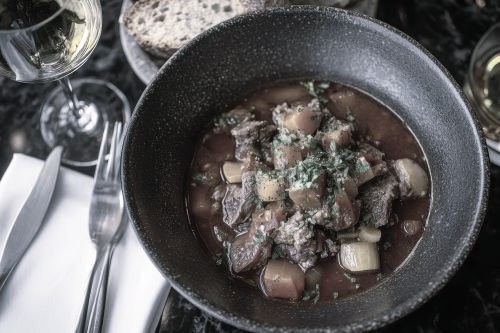 Tripe
Tripe
Tripe is the stomach lining of a cow or similar animal that might seem strange to us but was commonplace on our forefather’s dinner table. This is another one of those foods that makes the most out of the entire animal, ensuring nothing goes to waste.
Today you still find tripe or “Trippa” dishes in all kinds of ethnic cuisines. My grandma made sure I knew how to work with it. All these years later I can trip blindfolded with a cow’s third stomach in my hand, and still make you a muffuletta sandwich.
However, our forefathers most often slow-cooked chunks of tripe into stews. Often as a way to add body and protein value thin vegetable soups.
Tripe Dishes to Try
- Muffaletta Sandwich
- Tripe Stew
- Breaded & Fried Tripe
- Tacos de Tripa (Tripe Tacos)
- Pepper Pot Soup
Some supermarkets and big box stores still sell tripe in vacuum-sealed cryobags. Full-service country butchers can often get you tripe if you ask for it in advance as a special order.
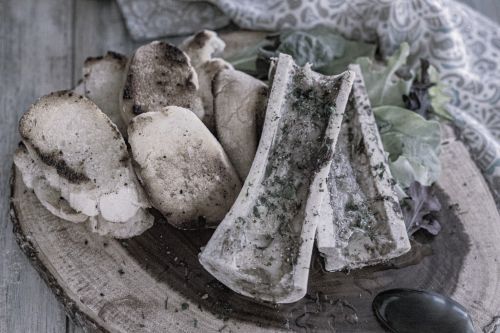
Bone Marrow
Bone marrow is one of those foods that seems strange to think of eating in the US, yet our forefathers and anyone who survived the Great Depression ate a lot of bone marrow. Smaller bones like the neck and shank were often cracked and simmered to extract the denatured proteins within the marrow into a rich broth.
Long bones, like the femur of cattle, sheep, and goats were sometimes split or cut into sections. Then roasted over an open flame until the marrow inside was the consistency of soft butter. It was then spread generously on bread, ash cakes, corn cakes, or tortillas.
Bone marrow only stopped being a popular ingredient in the US a generation or two ago. When my grandfather was dying and asked what he wanted for a last meal he asked for roast bone marrow like his mother used to make. Today in London the high-end restaurant St. John has bone marrow salad on their menu.
Bone Marrow Dishes to Try
- Vegetable Soup with Bone Marrow Broth
- Roast Bone Marrow on Toast (recipe below)
- Bone Marrow Panzanella Salad
Roast Bone Marrow on Toast Recipe
Roast bone marrow on toast is one of my favorite recipes, that will put some future cardiologist’s kid through college. It’s been around for centuries, but it was perfectly modernized by chef Fergus Henderson.
I’ve toyed around with it to make it more accessible for the average person. Including how to make it on a charcoal grill or smoker, like you’re find in the following recipe.
Ideally, you want to find a country butcher or a full-service meat market that processes their own steers. Then ask them to cut the femur long bones in half the long way. So that the marrow is sitting inside the bone like a hot dog sits in bun.
They’ll probably tell you; they need to cut the long bone in thirds, which will expose part of the marrow. That’s perfectly fine. Just tightly wrap the cut end with heavy duty aluminum foil to keep any rendered marrow from leaking out.
Ingredients:
- Day old bread from a French-style baguette or Italian loaf.
- A single beef long bone cut lengthwise
- Fresh flat leaf parsley, rough chopped
- Olive oil
- Fresh lemon wedges
- Sea salt
- Fresh cracked black pepper
- Capers (Optional)
- Cloves of garlic (Optional)
Method:
- Step One: Fire up your grill or smoker to 225-degrees.
- Step Two: Lightly oil the exterior of the bone and wrap any exposed ends of the bone in heavy duty aluminum foil. Allowing the long, cut surface to be exposed and facing up.
- Step Three: Place the bones on an old sheet pan or tray and stabilize them with balls of foil to keep the bones from rolling when you move them. Sprinkle salt and pepper over the marrow. Place any optional whole cloves of garlic on the sheep pan, still in the skin.
- Step Four: Cut the bread into slices rough half an inch thick. Then place it on the grill or smoker grates to let it toast over direct heat.
- Step Five: Place the tray of bones in the smoker or on the grill grate and close the lid. You want them to roast with as much smoke as possible.
- Step Six: Rough chop the flat leaf parsley and dress it with fresh squeezed lemon juice. Stir in any optional capers.
- Step Six: After 5 to 7 minutes check the marrow and the bread. Ideally, the slices should be well toasted with perhaps some small black spots on the edges, like a rustic crostino. Then pull them and keep tented under foil.
- By now the marrow should have sweat marks on it but is still reasonably solid.
- Step Seven: Watch the marrow closely as it renders. Sometimes it will take another minute to five minutes to properly soften. You want to pull it as soon as the marrow has the consistency of softened butter.
- *By this point it can easily go over and render into liquid. So, you’ll probably have to watch it with the lid open at the end.
- Step Eight: Pull the perfectly softened marrow bones, and immediately start spreading them on the toast. If you opted for garlic, you should be able to nick the top of each clove and squirt the softened garlic paste out of the skin like a ketchup packet.
- Step Nine: Each piece of toast is topped with parsley, lemon and caper salad to be eaten immediately.
This is one of those dishes that sounds simple on paper, but the timing of all the different steps needs to come together just right. So, don’t be dismayed if something goes wrong the first time or two.
The marrow has a lot of caloric value. It’s also loaded with Vitamin A, Vitamin B12, iron, collagen, as well as Omega 3 and Omega 6 fatty acids. So, it’s the sort of thing you can have with a belly-filling starch like rice or roasted potatoes to make a meal or serve it as an appetizer.
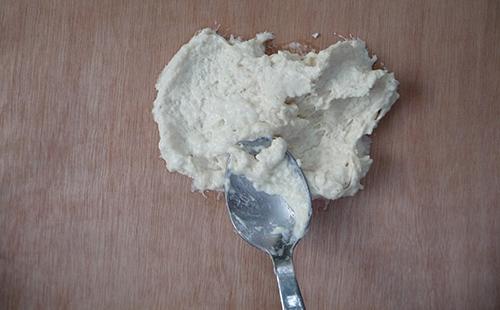 Ash Cakes
Ash Cakes
The so-called “Ash Cakes” our forefathers routinely ate are sort of a weird, primitive forerunner of modern cornbread. It was made by cooking a thick cornmeal-based dough directly in the ashes of a fire. It would be periodically turned if one side looked to be baking or burning faster than the other. There was a little bit of an art form to it.
Of course, being so close to the fire, and at the edges meant getting a fair amount of ash on the sticky cornmeal batter. Lending to the name “Ash Cakes.”
Ash cakes were common for pioneers who needed to add a belly-filling component to their meals but lacked a proper oven. A similar practice was used by Native Americans who often had access to their version of ground cornmeal or corn flour.
Today you could improvise something similar. You could lightly grease some heavy-duty aluminum foil and wrap the cornmeal to keep it from being covered by ash.
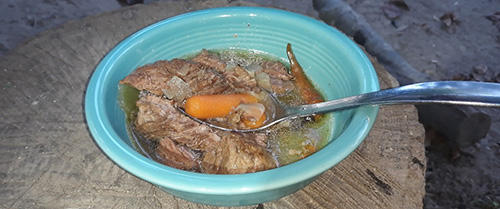 All-Day-Porridge or All-Day-Stew
All-Day-Porridge or All-Day-Stew
The pioneers and many early forefathers would keep some type of all-day stew or porridge simmering in a cast iron pot over an open fire. Sometimes it was the campfire while stopped on the Oregon Trail, or over the hearth in a cabin.
Anything went in these all-day stews, as they were meant to let people eat while they were coming and going from the communal fire. Often it would start as a grain or oatmeal porridge for breakfast. As the day went on, different meats and foraged vegetables would be added to it.
If someone killed a rabbit, the offal and tougher chunks went in. If someone killed a snake, it was cut into pieces and added to the pot. If someone found wild carrots, they were cleaned and put in.
This meant that the all-day stew might end up looking, smelling and tasting very different in the evening, from how it started in the morning. Yet it was a simple strategy that helped keep everyone in the family fed, without putting a lot of labor time in the actual act of cooking proper meals.
You may also like:
 I Opened a Beef Tallow Jar From 10 Years Ago. This Is What I Learned
I Opened a Beef Tallow Jar From 10 Years Ago. This Is What I Learned
If You See This Plant in Your Backyard, Don’t Step on It! (Video)
6 Ingenious Projects for Endless Hot Water Without Electricity

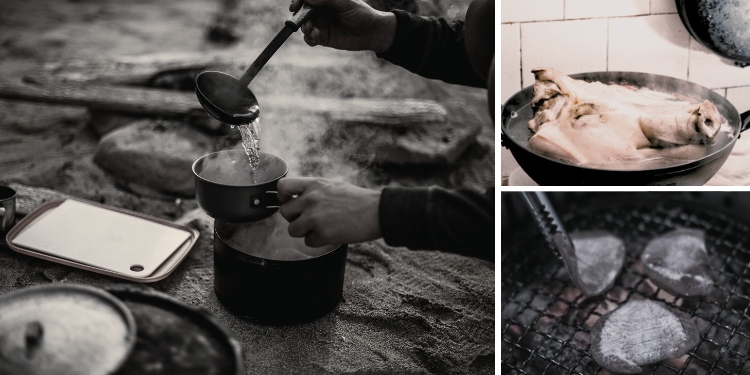




















my mother-in-law could and did cook anything. if you went to her house and she said she was serving meat for dinner, you didn’t ask what it was, but it was good. she would cood poke stalks up so you couldn’t tell it from okra. i really enjoyed that. theres alot of lost receipes out there and thats a shame.
Here in Spring, near Houston, we have a good supply of Mexican Meat markets and we enjoy eating Lengua de res, or beef tongue. We boil it for about an hour, then remove the tough outer skin of the tongue to get to the soft inner meat! My favorite is sliced tongue in between 2 slices of bread with Miracle Whip spread and beef tongue.
My mother in law who is now 97 used to make pickled tongue.
My mom used to make a lot of things from left over meats when they were butchered…..head cheese, pickled pigs feet, beef tongue, etc. I remember them as good at the time, but I don’t cook any of them myself.
No wonder all those people died from TB and small pox. If you have to eat this stuff, except the squirrel and rabbit, they wanted it to put them out of their misery!
Small pox! Please!
Cannot believe you are leaving out pigs feet which my spouse is cooking as we speak.
And beef heart. Baked in the oven like a roast with vegetables.
My rural family’s origins include everything above, but also included:
Ox tale soup, scrambled eggs with brains, pigs feet, chicken feet, and a mystery concoction my grandmother called scrapo. And an occasionally horse. That was a favorite of one of the ranch hands. He was was a Tlingit indian, and grew up on lean meat. Good times!
Don’t forget using that tripe to make Menudo…grew up with it and still get it when I can
Livermush! I still make it and eat it. You used to use the pig liver and lungs, cook them down well, then add seasoning and cornmeal to form the mush. You formed it in a pan, and after it set up you sliced and fried it, serving over grits. Now you can’t get lung unless you butcher your own, so I cook up some pork cubes along with the liver. Then you grind it all up, with some of the juice, season and add cornmeal until it’s thick. Mold in a bread pan, slice and fry up as before. Serve over grits and you have heaven on a plate. I even made it in Germany when I moved over there. My German husband loves liver mush. My first husband wouldn’t touch it. I have some here now that I freeze dried to eat anytime I want it. It’s a little like a brittle piece of jerky, and very good.
Is that the reason for all the mysterious cattle mutilations….long lost pioneer recipes from askaprepper ?
I thought I was getting hungry til I read this! LOL Praying for the Rapture before having to resort to these foodstuffs.
Beef heart, beef tongue, calf liver, and chicken gizzards and hearts. Add ham hocks to dinner.
These foods were treats in the 60’s. My mother fed a family of 5 on less than $100 a month. Depending on the day of the week was a menu. Sunday was a bonus.
I’ve been trying to revive my mom’s recipes. I didn’t get the benefit of a recipe. It takes 3-4 attempts to get it close.
Chicken gizzards and hearts that are pirated out of my whole chickens still find a way in my cart when I find them at the store. Grumbleing at having to pay I am so pleased to sit and eat it all by myself. Dump ’em in the pot, onion salt, garlic powder, poultry seasoning, celery, onion and add a couple of boullion cubes. A little splash of vinegar if you have it and some carrots. Simmer until tender and enjoy. This works with heart, tongue too. Really fancy, add some potatoes, canned or fresh mushrooms, fresh or frozen vegetables. Anything is possible.
That sounds like a delicious throwback to real, resourceful cooking! It’s funny how the parts our forefathers cherished have become “weird” today, but honestly, your recipe sounds like pure comfort in a pot. Gizzards, hearts, and tongues may not win beauty contests, but they sure know how to deliver flavor when treated right. I love how you just toss in what’s on hand, very much in the spirit of the old days, where nothing went to waste and every meal was made with care and creativity.
I’ve enjoyed this entire article. Brought back yummy memories of wonderful dinners.